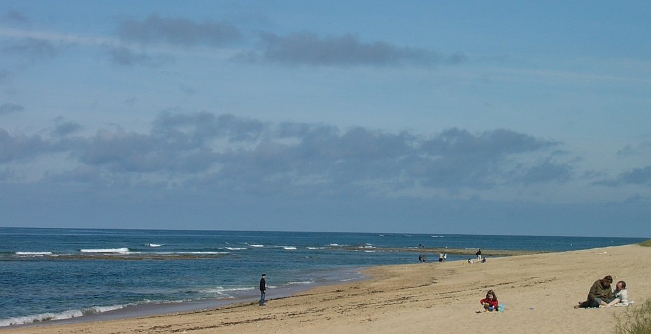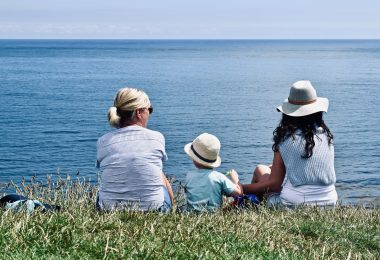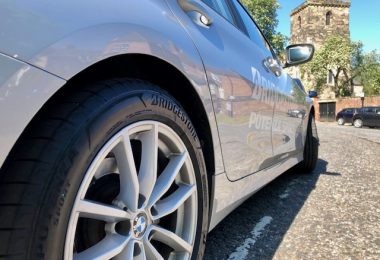On holiday in the sun-drenched south west of France, Tom Henry and his family discover there is more to life than food on the hoof. Lovely as she or he may otherwise be, a faddy child at mealtimes is far from a pleasure to be with.
When other perfectly-mannered children are using their knives and forks like little guests at a Royal Wedding, yours sits implacably as you beg, plead and bribe your way past those zipper-lips and into the mouth with the soggy, cold twist of pasta. Other parents look on smugly in the sure knowledge that you’re bequeathing your offspring an eating complex, the size of which is in direct inverse proportion to the amount of food he’s actually swallowing. Worst of all, she’s seven years old and well beyond this kind of behaviour.
Now, you don’t pick a holiday on the basis of your child’s eating habits. Holidays – and food – are meant to be fun, and for a couple of weeks at least the meal ordeal can surely be shelved along with the waterproofs and woolly jumpers. That said, when we looked at this year’s destination a little more closely and discovered it was one of the great gastronomic centres of France the temptation to discuss dinner arrangements was too much.
We stared longingly at the pictures of outsize platters groaning with crab, lobster, langoustine, mussels, anchovies, whitebait and oysters. Lots of oysters, enough oysters to drive Russell Brand into monastic sanctuary. The damn things were on every photo, scoffed by the dozen at every opportunity. The locals even seemed to attach the shells to the walls of their houses in some kind of French take on pebble-dash. This was going to be an amazing holiday, deep in the Charente-Maritime region of south-west France. But not with a faddy kid.
“Well,” said my wife, determined that nothing would get in the way of cut-price crustaceans and cognac, “she’ll just have to try. Or go hungry. If it’s good for French children…”
Famous last words, I thought, as we packed the car and headed for St Malo via Brittany Ferries’ ever-reliable, ever-comfortable service from Portsmouth. Rowan, our daughter, didn’t turn her nose up at the food on board, but only because we chose from the children’s menu which included colour set, novelty toy, balloon and joke book. All well and good, but the French don’t take kindly to the concept of culinary encouragement by plastic. This could take some time.
A pleasant few hours later we arrived at the Siblu-run campsite of La Pignade. This is an exceptionally well-laid out, well-run mobile home site with a whole host of amenities and the usual friendly, hard-working and multi-tasking staff. The campsite is close to the seaside town of Ronce-les-Bains, and while the estuarine beach isn’t much to talk about there are excellent gift shops and a daily market offering a wide variety of clothes, shoes, bags, bric-a-brac and, you guessed it, local food. I’ve never seen a market heaving with so much produce, and this is just one small market in a small market town.
August is a busy time of year for this area, and to explore it in peace the best option is to hire a bike. The cycle path leads from Ronce-les-Bains right down the coast to Royan and beyond is second-to-none, and the coast and countryside that it meanders through spectacular. Part of the route takes the rider past the Cote Sauvage – as its name suggests, it’s a wild stretch of sand and water popular with surfers and strong swimmers. The younger end of the market is much better catered for at La Palmyre, a popular holiday destination with safe beaches and bathing, plus a wide variety of attractions including a fun park, horse riding and a famous zoo. The latter has just about every animal you can imagine, but British sensibilities might be shocked at the bags of popcorn sold at the gate and liberally handed out to elephants, giraffes, polar bears and any other creature that will take it.
In the first few days of the holiday Rowan taught herself to swim by simply leaping into the campsite’s lovely pool and getting on with it. Within days she’d demanded a mini surfboard and was happily taking to the gentle waves around La Palmyre, whooping and screaming as the ‘wipeout’ took hold. And after all the day’s activities she kind-of rode 10 miles back to the campsite on the bike. I say ‘kind-of’ – she was on a bike attached to mine and was therefore being pulled by a tired, sunburn and all-played-out dad, but she was getting a huge amount of fresh air and exercise. Which, in turn, was having a tremendous effect on her appetite.
In fact, there was no filling her. Eggs, baguettes, cheese, ham, tomatoes, cucumbers, tuna – she guzzled the lot and asked for more. As we were self-catering this wasn’t a problem and the camp shop could supply most needs. Alternatively, the cycleways take you past little coastal towns with wonderful fresh produce on offer relatively cheaply. Here, a dozen oysters were just €3.80 and a kilo of mussels far less, so there was plenty to spare for a bottle of pineau (a delicious Charentaise aperitif made from a blend of lightly fermented grape must and Cognac eau-de-vie), along with freshly-picked cherries and apple flans the size of a man’s head.
To get a better idea of how this area became the epicentre of France’s oyster production, we visited La Cité de l’Huître museumm in Marennes, a port town on the Gironde estuary complete with distinctive church spire that towers over the flat, marshy countryside on all sides.
The museum is housed in five separate cabins traditionally used in oyster farming. As the commentary explains, Charente-Maritime produces 50 per cent of France’s oysters and 80 per cent of the special ‘Claires’ oysters; molluscs with an emerald frill thanks to a unique blue algae here. At the understated but nonetheless hi-tech museum, one screen depicted Casanova, a twinkle in his eye and a plate full of oysters in the palm of his hand, advancing towards a bathing beauty covered in little more than rose petals and bubbles, reinforcing the oyster’s reputation as an aphrodisiac.
Needless to say we splashed out on oysters day after day and, once the painful process of opening the tough shells was mastered we were drinking them down by the dozen, and more. You can have them with tabasco sauce, or grilled, or deep fried, but we found the best recipe was the most natural – a simple dash of lemon and a little crusty bread on the side. At the other end of the mobile home’s terrace Rowan watched in amazement as her parents drank deep of this most acquired of tastes. It was inevitable that she’d ask the question sooner or later – “Dad, can I try one?”
Carefully I removed the fragments of shell from the water, squeezed on a drop of lemon and told her to drink it all in one go. Bravely, she did as she was instructed – and I’ve never seen a child’s face age so quickly in such a short time. Her eyes scrunched up, her mouth sucked in like a crone’s and after a second or two her tongue lolled, dog-like, and with it the oyster and its seawater came tumbling out on to her plate.
“That,” she said, as she scrubbed her entire face with her dress, “was the most disgusting thing. In the whole world. Never again.”
Well, time will tell, and the more time we spend in this most delightful corner of France the better. There really is something for everyone here and the summer seems to roll on for ever, and with it comes an abundance of local produce. Though having said that, we have promised to locate a McDonald’s next time we come, before hitting the seafood bar straight afterwards. Some compromises are well worth it…
* Tom Henry and his family travelled to La Pignade, Charente-Maritime, south-west France, as a guest of Siblu Holidays. For more information about Siblu visit www.siblu.com or ring 0871 911 2288.








